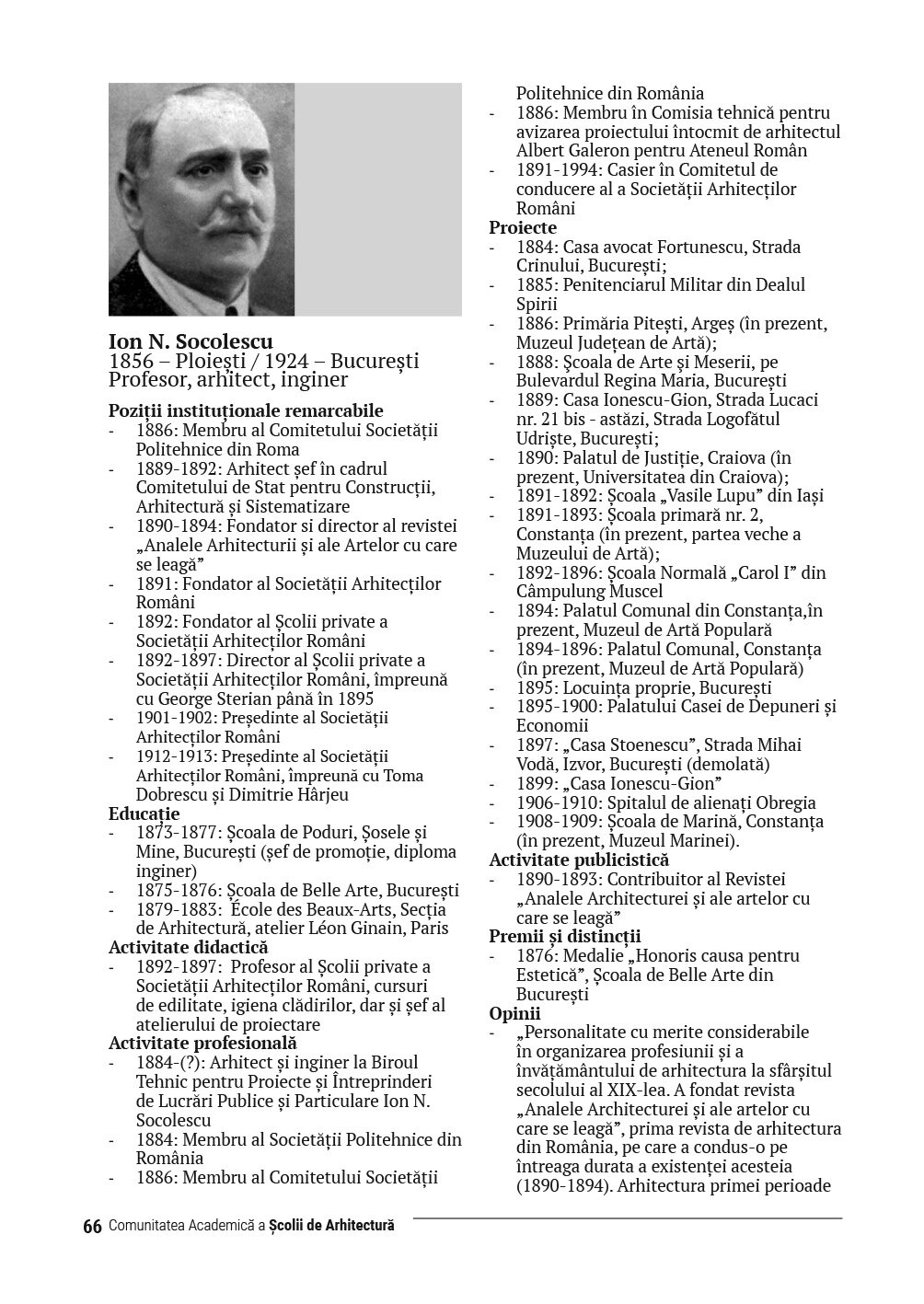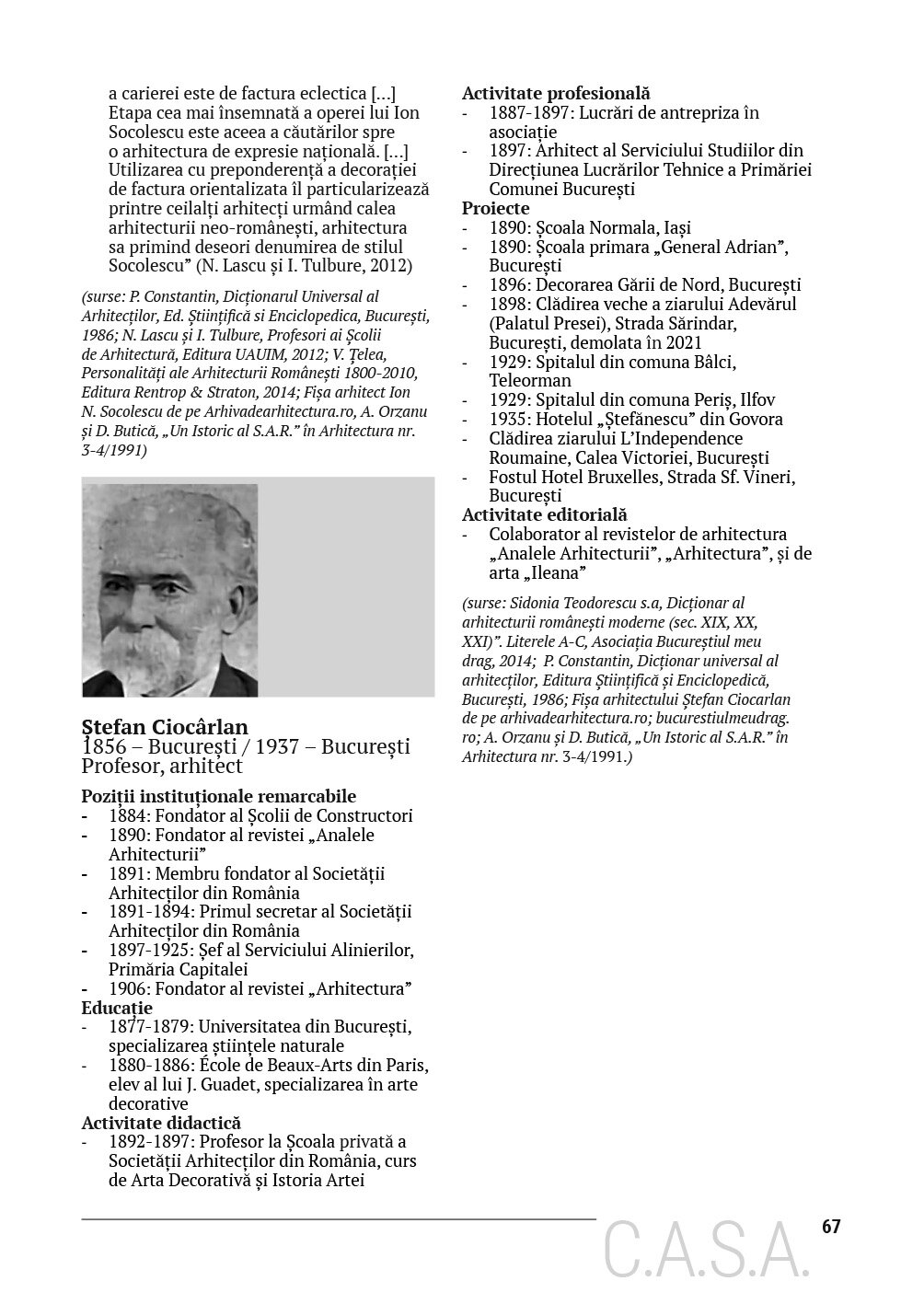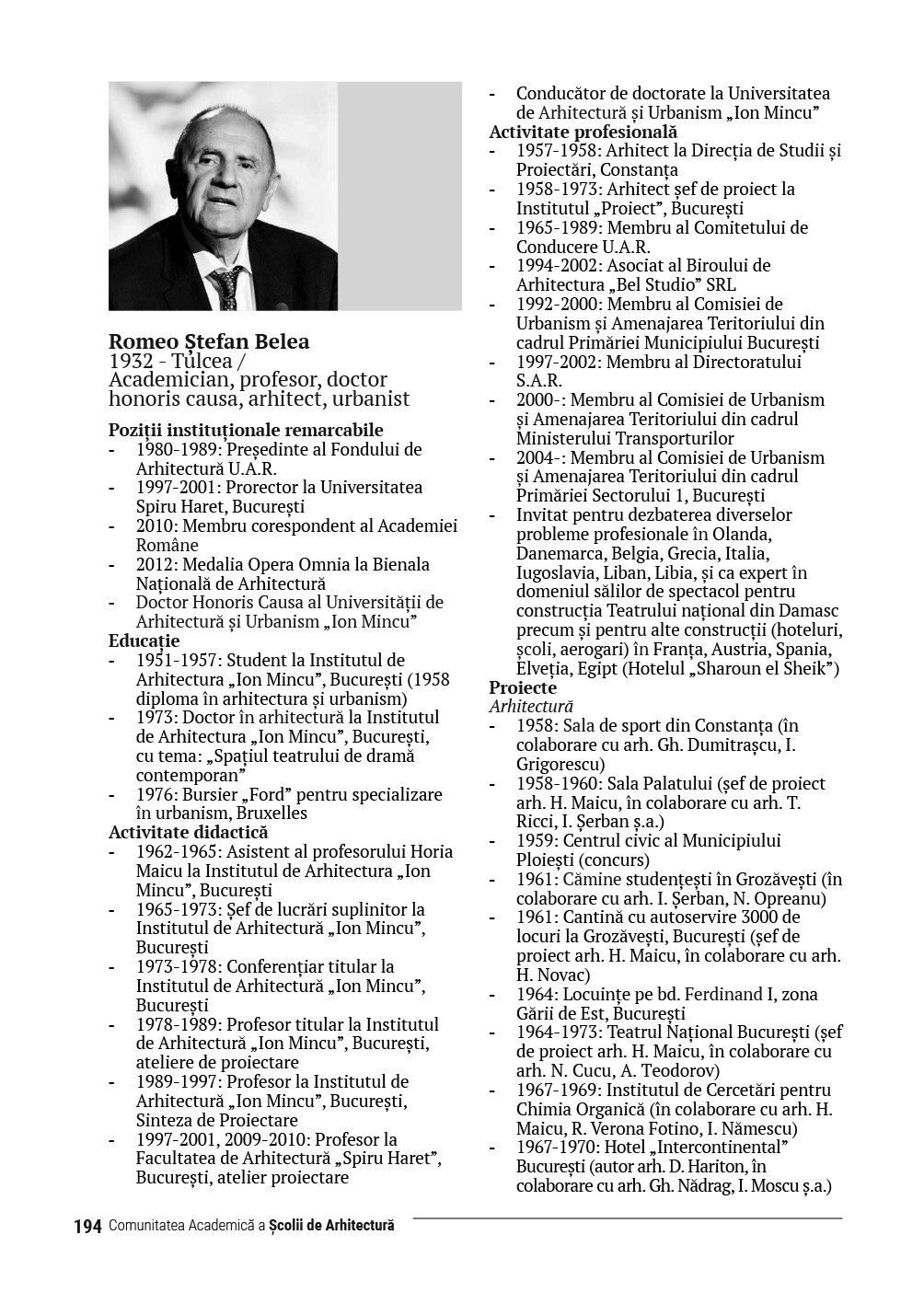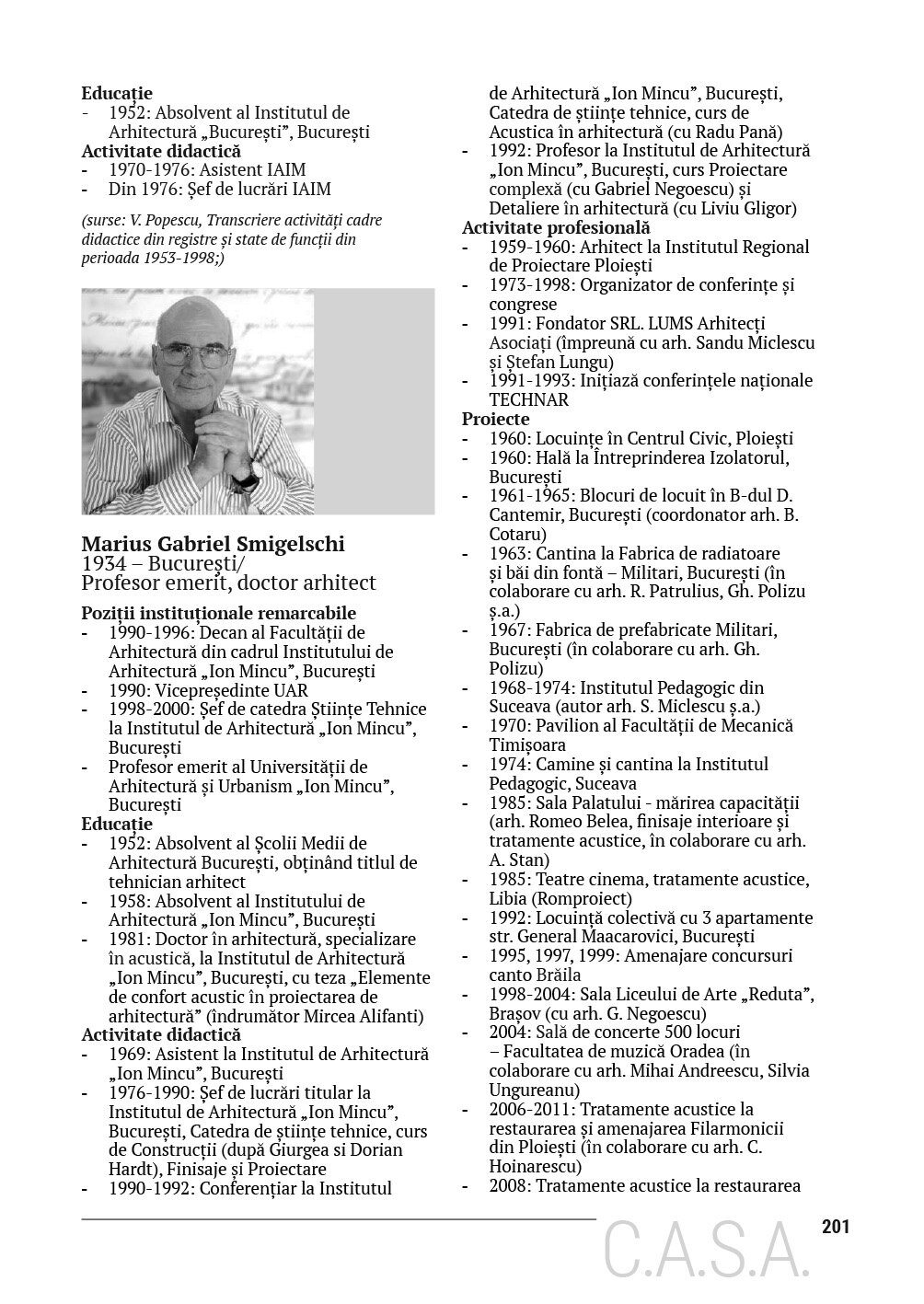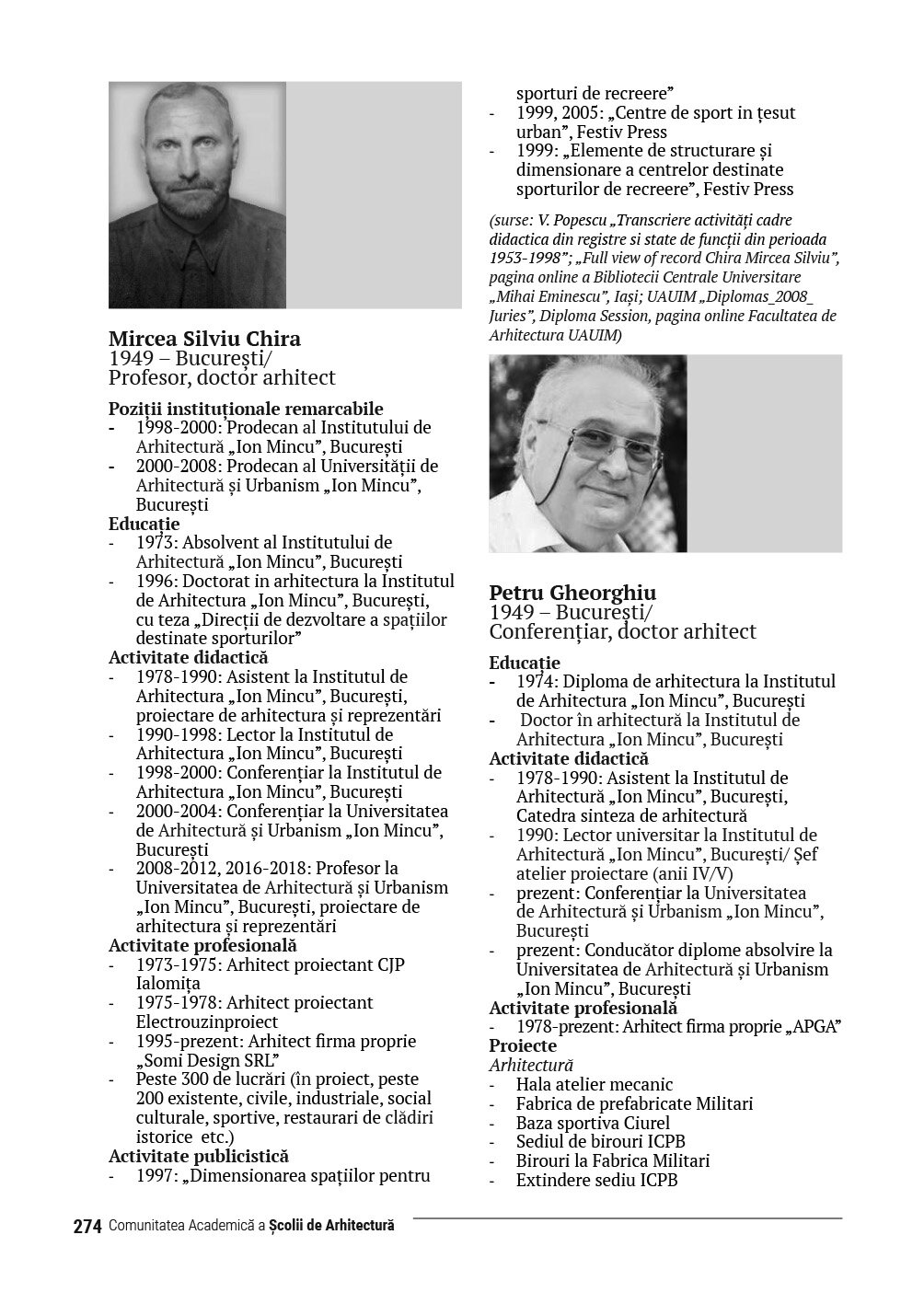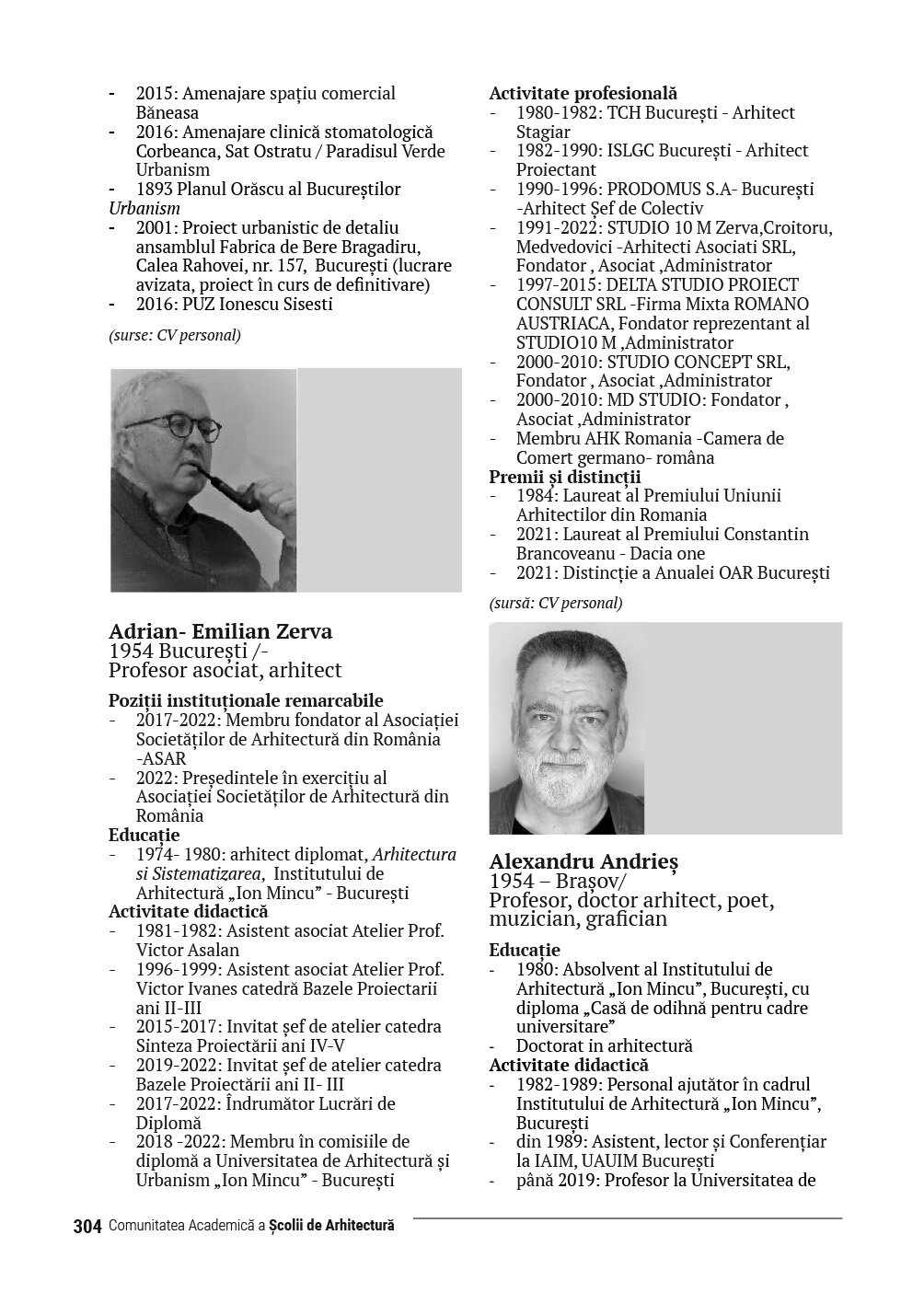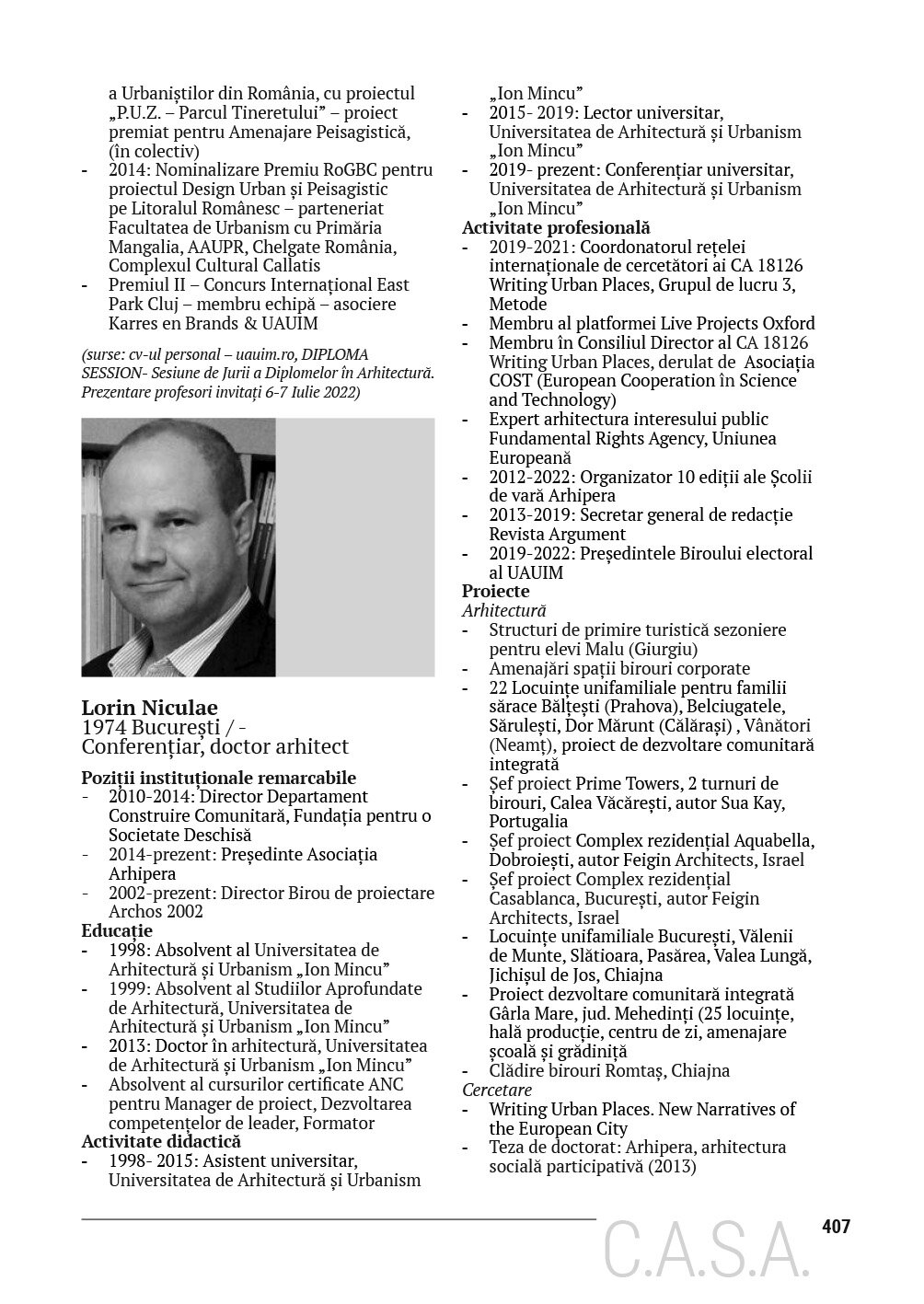
- Special Prize of the Union of Romanian Architects
- Special Prize of the Romanian Register of Urban Planners
The Academic Community of the Architecture University
Authors’ Comment
The research is dedicated to the development of the School of Architecture, but especially to the academic community of teachers who believed in, initiated and supported this profession, the needs and importance of higher education in the field, on the occasion of the 130th anniversary of the founding of the School of Architecture by the Society of Architects Romanians in 1892, forerunner of the current "Ion Mincu" Bucharest University of Architecture and Urban Planning.
The project supported by the University of Architecture and Urban Planning "Ion Mincu" Bucharest, the Union of Romanian Architects and the Order of Romanian Architects through the Bucharest Territorial Branch has the following objectives: initiating and highlighting the historical evolution of higher education in architecture in Romania, highlighting the contribution of higher education in architecture to the consolidation of the relationship between education and profession on the territory of Romania, highlighting the evolution of the academic curriculum during more than 130 years of established architecture higher education, analysing the dynamics and diversity of the study disciplines, highlighting the multidisciplinary formation of the academic body: architects, engineers, mathematicians , plastic artists, sociologists, economists and other professions, highlighting the contribution of the academic community to the edification of the national cultural heritage through the completed works: constructions or theoretical works.
The project also includes the professional development of 395 teaching staff who are or were part of the academic community of the architecture school and is addressed both to architects and professionals in related fields and to civil society as a direct beneficiary of the activity of this community.
The basis of the research is the work of academician Prof. Dr. Grigore Ionescu, entitled "75 years of Higher Architecture Education" written in 1973 at the Publishing House of the "Ion Mincu" Institute of Architecture. Grigore Ionescu lists the discontinuous attempts to form higher architecture education in Iași and Bucharest, starting with the Organic Regulation of 1831-1832 (a quasi-constitutional organic law), excluding the schools within the „Academia Domnească” - Princely Academy of Iași and Bucharest, founded by Gheorghe Asachi and Gheorghe Lazăr. Horia Moldovan, like the authors of this text, considered that the two school attempts at the two Academies are essential starting points for the higher education of native architecture.
Worth mentioning is "clasul de hotărnicie"- the course of topography, with architectural applications, initiated as education in Romanian language by Gheorghe Asachi in 1813 at the "Academia Domnească" - Princely Academy in Iași, and the "Școala de Ingineri Hotarnici" - School of Topography Engineers, in four guilds, with the teaching of architecture in guild three as a practical application of mathematics from the National School "St. Sava", initiated by Gheorghe Lazăr in 1818. Here, in 1832, the first architectural textbook of professor Carol Wallenstein "Elements of drawing and architecture" is published.
Monographic works of the Princely Academy of Iași, which became the "Mihăileană Academy" and then the University of Iași, of the Princely Academy "St. Sava" in Bucharest, from which they were formed over time, in the University of Bucharest and the Polytechnic School of Bucharest, and of the Fine Arts Schools in Bucharest and Iași where architecture was also studied.
The founding teachers of the (private) School of the Society of Romanian Architects were a generation of architects with double specialization, engineers in the Romanian space and architects with studies in Western Europe, in Paris, Milan or Berlin.
To the information in the text written by Grigore Ionescu, were added important information for the evolution of higher education in architecture collected from the periodical publications "Annals of Architecture" and "Architecture", based on the synthesis made by Gabriela Tabacu between the years 1906-1944 and from the collection of the Documentary Exhibition Center of UAUIM/ Museum of the School of Architecture. The area of investigations was completed by researching the opinions of the professors of architects who wrote about the history of specialized education in the mentioned periodicals: Ion Mincu, Ștefan Burcuș, Ion D. Traianescu, Ion Al. Davidescu, Alexandru Davidescu, Statie Ciortan, Nicolae Nenciulescu, Toma T. Socolescu, Ion D. Enescu, Mihai Enescu, Grigore Ionescu, Nicolae Gheorghe Lupu, Mircea Alifanti, Radu Patrulius, Albert Mihail Caffé, Mircea Lupu and Sanda Voiculescu,
Other relevant information was added from the monographs by Nicolae Lascu and Ana Maria Zahariade, Oana Marinache and others. For the period of the post-war regime, important sources of information were Ana Maria Vesa-Dobre's recent publications. Considerable detail has been added from the educational, didactic and professional path of the professor architects in the academic body.
The current research will continue with revealing the contributions of the Schools of Architecture attached to the Polytechnic Universities of Cluj, Iași, Timișoara and the more recent Faculty of Architecture in Oradea - which had a major regional professional impact and which ensured a better diffusion of the profession in territory, joined by teachers of the Faculty of Architecture from the private University "Spiru Haret" and architects who have taught architecture in other technical and art universities in Romania, emphasizing the cultural openness and multidisciplinarity of the profession of teaching architect.
- The Rehabilitation of Built Heritage. Theory and Technique
- Goldstein Maicu. Modern Villas.Constanța. 1931–1940
- The mediterranean architecture in romanian interwar period
- The Academic Community of the Architecture University
- Digital modeling of the impact of the 1755 Lisbon Earthquake / Second revised edition
- The Impalpable in Architecture. The Oikological Vocation and the Cosmotopic Character of the Architectural Interior
- The Dynamics of the Christian Lithurgical Space. The Influence of Function - 2nd edition revised, completed and actualized
- The Arad citadel. Architectural valences of the relationship between history and city
- Set Apart. Evangelical Worship Space
- Proportions in Architecture. Perceptions and spatial identity.
